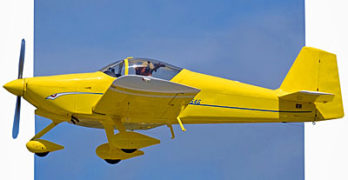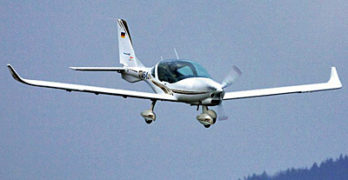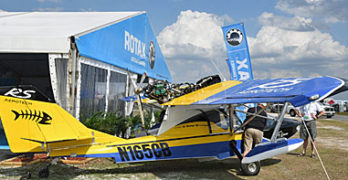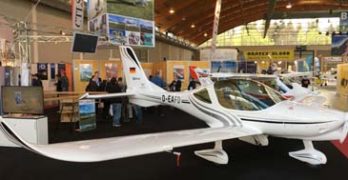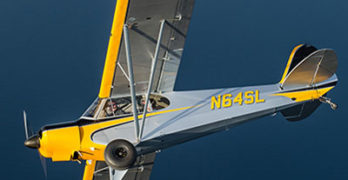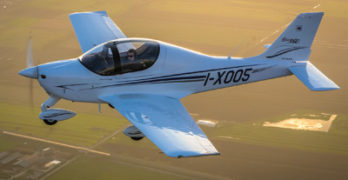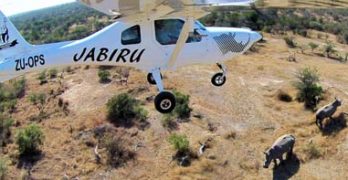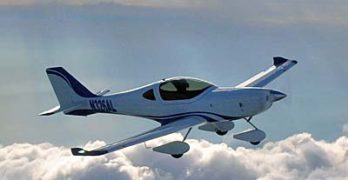Recently, a couple major benchmarks were reached by some of our important brand names. These notable achievements deserve mention given their relationship to the LSA and light aircraft sector that this website serves. One is an airframe builder and the other is a avionics giant.
Van’s Aircraft’s Immensely Popular RV-Series
According to a recent report in General Aviation News, “[When] David Porter took his first flight in his RV-7 on Nov. 24, 2017, he probably didn’t know he was making history. The Martinsburg, West Virginia pilot’s kit-built airplane became the official 10,000th Van’s RV-series aircraft.”
Van’s labeled David’s first flight as “official” because more than 10,000 RV-series kit aircraft are definitely known to be flying, but the company recognizes it may not know about all of them.
President of his local EAA Chapter (# 1071), David spent three and a half years building his RV-7 from a standard kit.
Search Results for : G3X
Not finding exactly what you expected? Try our advanced search option.
Select a manufacturer to go straight to all our content about that manufacturer.
Select an aircraft model to go straight to all our content about that model.
Vessel of South Korea and Flight Design Offer KLA-100
Recently, Vessel Co., Ltd., and Flight Design made a joint announcement after debuting their new KLA-100 low-wing, light aircraft at Aero Friedrichshafen 2017. Few expected this from the make of the very popular CT-series most recently including the CTLSi. Through 2016, this has been the most popular Special LSA in America.
The companies’ KLA-100 development program started quietly two years ago.
“The first flight was performed in Sumperk, Czech Republic in late March 2017 with test pilot Richard Ponizil at the controls. Since that time the plane has made seven more flights and met all expectations,” said Flight Design COO, Daniel Gunther.
KLA-100 is a brand new design destined to be certified as a Light Sport Aircraft for sale in countries that accept ASTM-compliant aircraft, with plans to meet the European EASA’s CS-LSA regulation. The companies think this will allow access to virtually every major aviation market in the world.
Searey Kit Aircraft Gets More Push… Simply!
Could Light-Sport Aircraft, light kit aircraft, and even ultralights benefit from in-flight adjustable propellers? After more testing and data collection answering that question should be easier.
Prominently displayed in front of the Rotax Aircraft Engines exhibit at Sun ‘n Fun — right at the main entrance to the large spring show — was a strikingly-painted Searey kit-built aircraft (photo). Why? The mission was to showcase how a Rotax-powered amphibian aircraft can get more push… without complexity.
Named Searey ATD, Advanced Technology Demonstrator, the collaborators include Progressive Aerodyne, producer of the Searey, Rotax Aircraft Engines, and MT Propeller, all coordinated by key developer, RS Aerotech of Nassau, Bahamas.
A joint news release said, “For the first time in the Light-Sport Aircraft category*, Searey ATD offers a single-lever operated constant speed propeller, which significantly improves performance and dramatically reduces power management complexity for the pilot.”
Searey ATD “will be used for long-time testing of new engines, propellers, and electronic systems.” To serve this goal, Searey ATD has been equipped with a state-of-the-art flight data acquisition and reporting system, which combines engine data with aircraft and navigation data.” Called a “first time” accomplishment, Searey ATD can “automatically transmit its engine and aircraft data via LTE networks worldwide.” The data “will be used by Rotax to perform engine health monitoring” similar to what airlines do globally.
Flight Design Updates Journalists; Introduces KLA-100
People here at Sun ‘n Fun have been asking questions about Flight Design as the company has no exhibitor presence. However, the popular CTLS can be seen at the AeroJones Americas space. Why is this the case? On duty at Aero, reporter (and publisher of Powered Sport Flying magazine) Roy Beisswenger provided the following report. —DJ
At the press conference for Flight Design president Matthias Betsch began the presentation explaining the company’s current situation. As many who follow the industry know, Flight Design has had their share of financial problems. The company is operating more or less as usual, but is in court-ordered receivership. That means many decisions the company makes need to be approved by the receiver. Fortunately, the situation is reportedly more stable than some speculate.
Official and creditors want the business to remain viable by producing, selling, and supporting primary products. However, projects in development may not always survive scrutiny.
Garmin International
Legend Cub Continues to (Slowly) Tear Up the Skies
At last fall’s inaugural DeLand Showcase event, I got a chance to fly Legend Cub on their own Legend Floats. I’ve interviewed Legend folks about this model, but flying one was still on my to-do list.
American Legend Aircraft Company was one of the very first in the Light-Sport Aircraft business and they’ve now fleshed out their product line of pretty yellow taildraggers… though, of course, they don’t have to be painted yellow even if almost everyone orders them this way. I guess it’s a vintage look thing, but I’m here to tell you these Cubalikes are nothing like your granddad’s Piper Cub (thank goodness, as Legend has made many desirable improvements).
One of the biggest changes is the wide variety of engines this company has offered. They started with the Continental Motors‘ venerable 100-horsepower O-200, added the 120-horsepower Jabiru 3300 six cylinder model, then tapped the 115-horsepower Lycoming O-233, and now Legend offers the mighty 180-horsepower Titan, offered these days by Continental following their acquisition of ECi of Texas.
BRM Aero, s.r.o.
BRM Aero manufacturers the handsome Bristell all-metal SLSA. This highly evolved, next-generation Light-Sport was carefully engineered for luxury, comfort, excellent stability, and safety while being fun, fast, and easy to fly.
Tecnam Upgrades Popular Sierra, Now Called Mark 2
Fourteen years ago, light aviation leader Tecnam brought their only low wing, the Sierra, to market. It went on to become one of their most popular airplanes …and that’s truly saying something since the Italian company has a broad line of beautiful airplanes.
On the 65th anniversary of this company founded in 1948, Tecnam brought their sparkling new Astore to the market (so named in honor of the very first aircraft the company offered). At its debut most thought Sierra had been replaced by Astore, perhaps never to be seen again. Happily, that is not the case.
An old line is: Nothing succeeds like success. Therefore, given the impressive run of Sierra the First, and even with the Astore, Sierra Mark 2 may be utterly logical. “The market is always demanding greater comfort and more features,” says Tecnam Managing Director, Paolo Pascale, “so improving and updating our product is a must.”
The Capua, Italy-based company announced, “Tecnam has introduced a substantially updated and improved Mark 2 version of the company’s popular P2002 Sierra.” The model name P2002 indicates the original design was created that year.
An Excellent Bargain in a Composite LSA
The lines are separating a bit. Once we had a flock of LSA priced closer to one another than today. While some are put off by splashy marketing from companies offering LSA priced north of $200,000, your choices do include fixed wing aircraft for $50-80,000 and alternative (weight shift, gyro, and powered parachutes) LSA for even less.
However, if you want an all-composite design with a digital panel, your choices of lower-cost models is, admittedly, more restricted. It costs money to make things with more exotic materials and with fancier equipment. The great news in late 2016 is customers are getting more choices in “reasonably” priced airplanes (shown in quotes as reasonable is a term that varies from person to person).
The new model in this article will be at the DeLand Sport Aviation Showcase coming up in just over two weeks. I hope you’re planning to attend.
A Lightning Bolt You Can Catch: LS1
Over and over I’ve heard about the cost of Light-Sport Aircraft. Indeed, some are approaching $200,000 and at least four have smashed through that barrier (CubCrafters, Icon, Terra Fugia, and Lisa). Now, I’ll grant you $200K+ for a two seater is fairly breathtaking. But…
In each case above and for those many others in the $125-175,000 range, we’re talking about real money. Balancing that, all LSA in the $125K and up price range are impressive aircraft with more bells and whistles than most GA airplanes (and even some airliners!). They are hand-built works of art using carbon fiber; digital cockpits; wide, luxurious cockpits with amazing visibility; and emergency airframe parachutes. They are marvels with autopilot, synthetic vision, gas-sipping (and very modern) engines, and so much more.
Virtually every LSA — no matter how impressively equipped — still remains at half to one third or even less of the cost of even the most affordable Part 23 general aviation airplanes.
- « Previous Page
- 1
- …
- 4
- 5
- 6
- 7
- 8
- 9
- Next Page »


